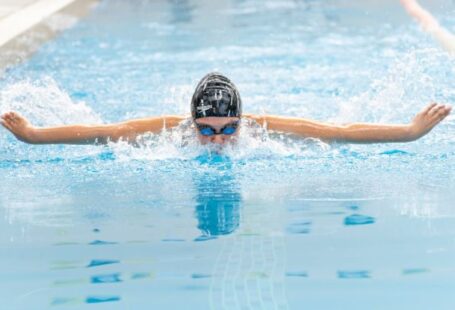Mastering the flip turn is essential for any competitive swimmer looking to improve their speed and efficiency in the pool. This technique allows swimmers to swiftly change direction at the wall without losing momentum, giving them a competitive edge in races. However, executing a flip turn correctly requires proper technique and practice. In this article, we will delve into the key steps to perform a flawless flip turn and take your swimming skills to the next level.
Preparing for the Turn
Before approaching the wall for a flip turn, it is crucial to maintain a consistent pace and approach. As you near the wall, ensure that you have a strong push off the last few strokes leading up to the turn. This momentum will carry you through the flip and into the streamlined push-off position. Focus on maintaining a steady rhythm and strong kick as you prepare to execute the turn.
The Flip
As you reach the wall, initiate the flip by tucking your chin to your chest and bringing your knees towards your chest. Use your core muscles to rotate your body and execute a quick somersault motion. The key to a successful flip is to maintain a tight tuck and keep your movements fluid and efficient. Avoid hesitating or slowing down during the flip, as this can disrupt your momentum and slow down your turn.
Push-Off
Once you have completed the flip and are facing the wall, it is time to push off into the streamlined position. Extend your arms overhead, one hand on top of the other, and press your head down between your arms. Your body should be in a straight line, with your legs tightly together and pointed towards the surface. The push-off is crucial for propelling yourself off the wall with power and speed, so focus on generating a strong push using your legs and core muscles.
Streamline Glide
After the push-off, maintain the streamlined position as you glide underwater. Focus on minimizing resistance by keeping your body straight and narrow, with your head tucked down and your arms extended in front of you. Use your flutter kick to propel yourself forward and maintain your speed during the glide. The streamline position allows you to move efficiently through the water and conserve energy for the next lap.
Approaching the Surface
As you near the surface during the glide, begin to gradually angle your body upwards towards the surface. Transition from the streamline position to your regular swimming stroke smoothly to resume your swimming rhythm. Maintain a strong kick and powerful arm movements to accelerate as you resurface and continue swimming.
Perfecting the Flip Turn
To master the flip turn, consistency and practice are key. Incorporate flip turn drills into your training sessions to focus on the individual components of the turn, such as the flip, push-off, and streamline position. Pay attention to your technique and seek feedback from a coach or experienced swimmer to identify areas for improvement.
Maintaining Momentum
One common mistake swimmers make during flip turns is losing momentum by slowing down or hesitating before executing the turn. To maintain your speed and efficiency, focus on maintaining a consistent pace leading up to the turn and executing the flip with speed and precision. Practice your flip turns regularly to build muscle memory and improve your technique over time.
Embrace the Challenge
While mastering the flip turn may seem challenging at first, with dedication and practice, you can elevate your swimming skills and performance in the pool. Approach each flip turn with focus and determination, and don’t be afraid to make mistakes and learn from them. By honing your technique and perfecting your flip turns, you can enhance your speed, efficiency, and overall swimming ability.





